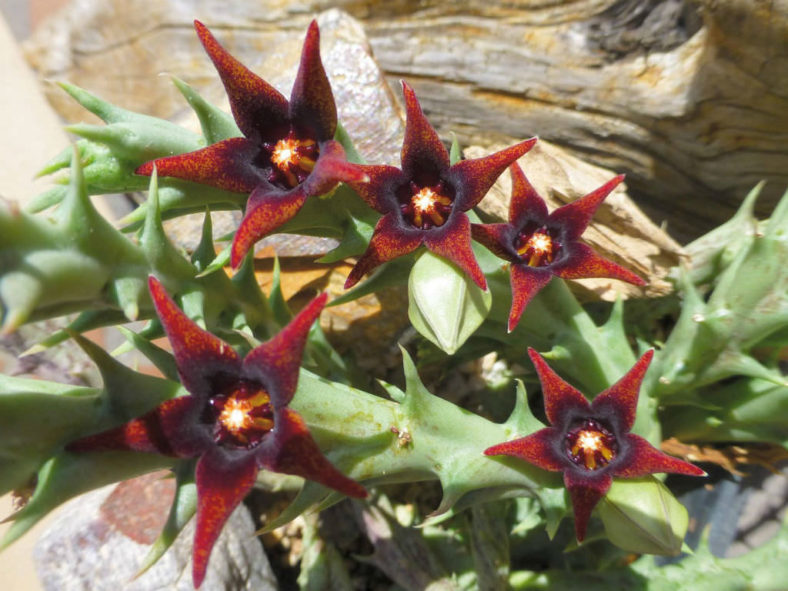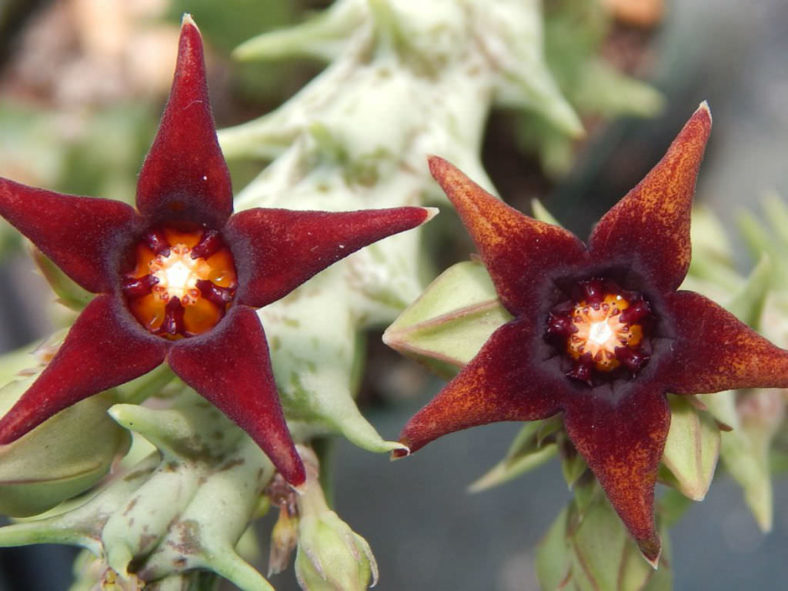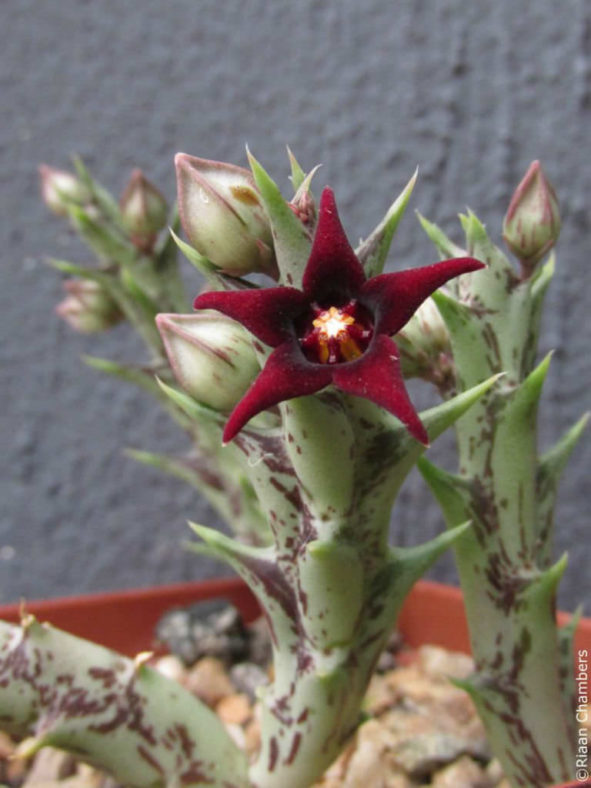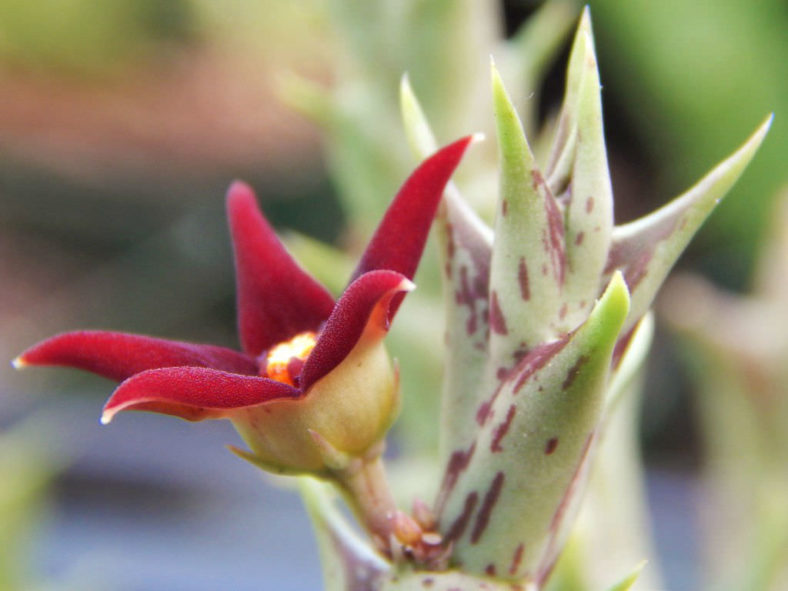Scientific Name
Orbea semitubiflora (L.E.Newton) Bruyns
Synonym(s)
Angolluma semitubiflora, Ceropegia semitubiflora, Pachycymbium semitubiflorum
Scientific Classification
Family: Apocynaceae
Subfamily: Asclepiadoideae
Tribe: Ceropegieae
Subtribe: Stapeliinae
Genus: Orbea
Origin
Orbea semitubiflora is native to Tanzania (Arusha Province).
Description
Orbea semitubiflora is a beautiful succulent that forms a cluster of grayish-green stems with unique purple markings. The stems are erect, spreading, or recumbent, measuring up to 3.6 inches (9 cm) long. They are 4-angled to rounded and have prominent conical to subulate tubercles that can grow up to 0.6 inches (1.5 cm) long.
The flowers are star-shaped with five dark red-wine lobes and a yellowish corona. They can reach up to 0.5 inches (1.3 cm) in diameter and appear from summer to fall near the tips of the branches.

Hardiness
USDA hardiness zones 10a to 11b: from 30 °F (−1.1 °C) to 50 °F (+10 °C).
How to Grow and Care
Several species are fairly easy to grow. Others, often those with slightly hairy stems and the more unusual flowers, are more challenging and require careful watering (with some fertilizer) during the growing season and complete water withdrawal during the winter months. A minimum winter temperature of 50 °F (10 °C) is acceptable, providing plants are kept dry. A heated growing bench or incubator may help delicate plants get through the colder months. However, many species live under shrubs in their habitat and prefer light shade rather than full sun.
A gritty compost is essential, and clay pots are advisable for the more delicate species. Some growers prefer mineral-only compost to minimize the chance of a fungal attack on the roots. A layer of grit on the surface of the compost prevents moisture from accumulating around the base of the stems.
Keeping Stapelias and their roots free of pests such as mealybugs is the real key to success, as fungal attacks often result from damage to stems by an insect.
Learn more at How to Grow and Care for Stapelia.
Links
- Back to genus Orbea
- Succupedia: Browse succulents by Scientific Name, Common Name, Genus, Family, USDA Hardiness Zone, Origin, or cacti by Genus
Photo Gallery
Click on a photo to see a larger version.


